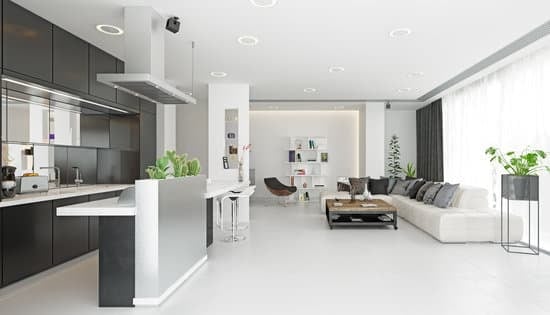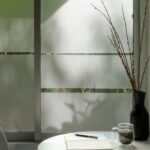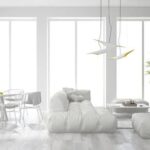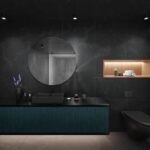During a home decorating consultation, a trained interior design professional meets with clients to discuss their design goals and preferences for their space. This initial meeting is an important part of the interior design process, as it sets the foundation for creating a personalized and functional space that aligns with the client’s needs.
A home decorating consultation involves various steps and considerations to ensure a successful outcome. The first step is preparing for the consultation by tidying up the space and gathering inspiration images or creating a mood board to share with the consultant. This helps provide a visual representation of the client’s desired style and helps guide the consultant in developing a personalized design concept.
Once the preparation is complete, the initial meeting takes place, where the focus is on getting to know the client better. The design professional will discuss any specific design goals, preferred color schemes, furniture styles, and materials. Additionally, they will delve into understanding how the client uses their space on a daily basis and any functional requirements that need to be taken into consideration.
Overall, a home decorating consultation serves as a crucial starting point in transforming a house into a well-designed home. By collaborating with an experienced professional who can assess the space, understand the client’s vision and lifestyle, propose various design elements, and help establish a budget and timeline for implementation, homeowners can ensure that their desired aesthetic is achieved while maximizing functionality in their living spaces.
Preparing for a Home Decorating Consultation
When it comes to home decorating, a consultation with a professional can provide valuable insights and guidance. However, before the consultation takes place, it is important to adequately prepare your home to make the most of this meeting.
Firstly, it is crucial to declutter and clean your space. Remove any unnecessary items that may distract or overwhelm the consultant during the visit. This will allow them to focus on the potential of your home without being hindered by clutter. Additionally, a clean space creates a more welcoming environment and helps convey your commitment to the design process.
In addition to decluttering, it can be beneficial to create a mood board or gather inspiration images prior to the consultation. This can help you articulate your desired aesthetic and communicate your design preferences effectively. Include images of colors, textures, furniture styles, and other elements that resonate with you. Sharing these visuals with the consultant will give them a clearer understanding of your style and enable them to tailor their suggestions accordingly.
| Tips on Preparing for a Home Decorating Consultation |
|---|
| 1. Declutter and clean your space |
| 2. Create a mood board or gather inspiration images |
By following these tips, you can ensure that your home is ready for an effective and productive consultation with an interior design professional.
The Initial Meeting
During the initial meeting of a home decorating consultation, the focus is on getting to know the client and understanding their design goals and preferences. This phase of the consultation is crucial as it sets the foundation for the entire design process. Here are some key aspects that are typically discussed during this meeting:
#### Discussing the client’s design goals and preferences.
The designer will engage in a conversation with the client to understand their vision for the space. They will ask questions about their design goals, such as whether they want a cozy and rustic atmosphere or a modern and minimalistic look. Additionally, discussing any specific themes or styles that resonate with the client will also help in tailoring an individualized design concept.
#### Understanding the client’s lifestyle and functional requirements for the space.
In order to create a space that is not only aesthetically pleasing but also functional, it is essential for the designer to understand how the client intends to use each room. Questions regarding family size, hobbies, work-from-home needs, and entertaining preferences can provide valuable insights into designing spaces that cater to their lifestyle. For example, if there are children in the family, incorporating kid-friendly features such as durable furniture or designated play areas may be important.
After gathering this information during the initial meeting, the designer can begin translating these aspirations into creative concepts that align with both aesthetic preferences and functional requirements. As every individual has unique tastes and needs, this personalized approach ensures that the resulting design reflects who they are while creating a space that enhances their daily life experiences.
Assessment of the Space
During a home decorating consultation, one crucial step is the assessment of the space. This involves evaluating the current layout, furniture, and decor to identify areas that need improvement or renovation. By thoroughly assessing the space, interior designers can have a better understanding of its limitations and potential, allowing them to create a design plan that maximizes its functionality and aesthetic appeal.
Evaluating the Current Layout
The first aspect of assessing the space is evaluating the current layout. Interior designers will analyze the existing arrangement of furniture and determine if it effectively utilizes the available space. They will consider factors such as flow, balance, and focal points in order to determine if any changes or adjustments are necessary. This evaluation is important as it allows designers to identify any issues with the current layout that may be hindering the functionality or visual appeal of the space.
Identifying Areas for Improvement
In addition to evaluating the layout, a thorough assessment also involves identifying areas that need improvement or renovation. This may include outdated furniture pieces, worn-out flooring, or lackluster decor. By identifying these areas for improvement, interior designers can make appropriate recommendations to enhance both the functionality and aesthetics of the space. This process helps clients understand which aspects require attention and prioritization in order to achieve their desired outcome.
As part of this assessment process, interior designers may also take into consideration factors such as lighting conditions, storage needs, and architectural features that can be highlighted or modified. By thoroughly assessing the space at hand, designers can gain valuable insights into what changes should be made to transform it into a visually appealing and functional environment that aligns with their client’s goals and preferences.
Design Concept Development
During the design concept development stage of a home decorating consultation, the interior designer and client collaborate to create a personalized design concept that suits the client’s preferences and goals. This stage involves exploring various color schemes, furniture styles, materials, and overall aesthetic visions for the space.
To begin this process, the interior designer will typically ask the client a series of questions to gain a deeper understanding of their design preferences. They may inquire about favorite colors, styles they are drawn to, and any specific themes or moods they want to convey in the space. By delving into these details, the designer can then develop a design concept that aligns with the client’s vision.
Once the initial information is gathered, the interior designer will present various options and ideas to help refine and narrow down the design concept. This could involve showing sample images, fabric swatches, paint colors, and furniture styles. The goal is to find elements that resonate with the client and bring their vision to life.
Throughout this process, collaboration between the interior designer and client is key. The designer brings their expertise and knowledge of current trends and design principles while ensuring that they respect and incorporate the client’s preferences. By working together closely during this stage of development, both parties can ensure they are on the same page when it comes to creating a cohesive design concept for the space.
Design concept development is an essential component of the home decorating consultation as it sets the foundation for all subsequent decisions regarding furniture selection, material choices, and overall styling. This collaborative approach ensures that both functional requirements and aesthetic desires are met in order to create a well-designed space that reflects the client’s unique personality and lifestyle.
Space Planning and Furniture Selection
During a home decorating consultation, one of the key aspects that the interior designer or consultant focuses on is space planning and furniture selection. This step involves creating a layout plan that maximizes the functionality and flow of the space, as well as recommending furniture pieces that align with the design concept and meet the client’s needs.
Space planning is crucial in making sure that each area of the room is utilized effectively and efficiently. By considering factors such as traffic flow, natural light, and architectural features, the consultant can determine the best placement for furniture pieces to optimize both aesthetics and practicality.
They will assess the dimensions of the room, taking into account any existing architectural elements like windows, doors, or built-in shelves. This assessment allows them to create a harmonious balance between all elements in the space.
Once a layout plan has been established, the consultant will then proceed with furniture selection. This involves recommending furniture pieces that suit both the design concept and functional requirements discussed with the client during previous stages of the consultation. The consultant may suggest specific types of furniture based on factors such as comfort, durability, and style preferences. They may also offer guidance on choosing furniture sizes and shapes that appropriately fit within the designated areas.
In this section of the consultation process, it is important for clients to communicate their needs and preferences clearly to ensure that the selected furniture meets their expectations. Additionally, discussing any budget constraints with your consultant can help guide them in recommending appropriate furniture options.
By collaborating with an experienced professional during this stage of a home decorating consultation, clients can benefit from expert advice on creating an efficient and aesthetically pleasing arrangement of furniture in their space. This ensures that each piece serves a purpose while adding to the overall design scheme.
| Aspect | Action |
|---|---|
| Assessing room dimensions | Measure the room and note any architectural features |
| Creating a layout plan | Determine the best placement for furniture to optimize functionality and flow of space |
| Recommendation of furniture pieces | Suggest specific furniture types based on design concept and functional requirements |
| Guidance on sizes and shapes | Offer advice on selecting furniture that appropriately fits designated areas |
Material and Finishing Selection
Choosing the right materials and finishes is a crucial aspect of any home decorating project. During the material and finishing selection phase of a home decorating consultation, the interior designer will work closely with the client to discuss various options for flooring, paint colors, wallpapers, and other finishes. This section will explore the importance of material and finishing selection in creating a cohesive design concept and how professional guidance can help in making informed choices.
The material and finishing selection process involves considering the overall aesthetic vision of the space and finding materials that align with that vision. The interior designer may present different samples and swatches for the client to choose from, taking into account factors such as durability, maintenance requirements, and budget constraints. They will also consider how different materials interact with each other to create a harmonious atmosphere.
Flooring options are an essential consideration when it comes to material selection. The interior designer may present choices such as hardwood, tile, carpet, or vinyl based on the specific needs of each room. Paint color selection is another important aspect during this phase. The designer will take into account factors such as natural light, room size, existing furniture pieces, and desired mood to suggest suitable paint colors that tie in with the overall design concept.
Apart from flooring and paint colors, wallpaper can also be considered for adding visual interest and texture to a room. The interior designer may suggest different patterns or textures based on the client’s preferences and specific design goals. Other finishing selections such as window treatments, lighting fixtures, hardware for cabinets or doors can also be discussed during this phase.
Decoration and Styling Recommendations
During a home decorating consultation, one important aspect that the interior design consultant addresses is decoration and styling recommendations. This step focuses on providing the client with suggestions on how to enhance the overall design aesthetic of their space through the use of decorative accessories, artwork, and lighting fixtures.
To begin, the consultant may take into consideration the existing design concept and propose decorative elements that align with it. For example, if the client desires a minimalist and modern look, the consultant might suggest clean-lined sculptures or abstract art pieces to complement this aesthetic. On the other hand, if the client prefers a more eclectic style, recommendations may include vibrant rugs or unique statement artworks.
Additionally, styling recommendations for various surfaces within the space are also discussed. The consultant may provide guidance on how to arrange shelves or tables in an aesthetically pleasing manner by balancing different heights, textures, and colors. They may suggest specific placement of vases, plants, books, or personal items to create a visually appealing vignette.
In terms of lighting fixtures, the consultant can recommend fixtures that not only provide adequate illumination but also serve as design focal points in themselves. Whether it’s pendant lights over a kitchen island or an eye-catching chandelier in a dining room, these suggestions can greatly contribute to enhancing the overall ambiance and visual impact of a space.
Overall, decoration and styling recommendations play a crucial role in completing the desired look and feel of a well-designed space. Through collaboration between the client and consultant during this stage of the consultation process, personalized solutions can be developed to reflect individual taste while maintaining coherence with the overall design concept.
Budgeting and Timeline
Estimating Costs
One important aspect of a home decorating consultation is budgeting. During this stage, the interior design professional and the client discuss the estimated costs for the proposed design elements. This includes everything from furniture and materials to labor and installation fees. The consultant may provide a breakdown of these costs, allowing the client to see where their money will be allocated.
The budgeting process also involves discussing any financial constraints or limitations the client may have. This helps ensure that the design concept and recommendations are realistic and achievable within the client’s budget. The interior designer may offer alternative options or suggest ways to prioritize certain design elements to stay within budget without compromising on quality or style.
Timeline Discussion
Another important consideration during a home decorating consultation is establishing a timeline for the implementation of the design. The timeline will depend on various factors such as the scope of the project, availability of materials, and any necessary renovations or construction work.
The designer and client will discuss key milestones and deadlines for different stages of the project, such as ordering furniture, completing renovations, or scheduling installations. Having a clear timeline helps both parties understand what needs to be done when, ensuring that each step is executed efficiently.
During this discussion, it is crucial for both parties to communicate openly about any potential delays or unexpected circumstances that might impact the timeline. Flexibility is essential in establishing a realistic timeline that accommodates unforeseen challenges while still delivering results within an agreed-upon timeframe.
The Importance of Budgeting and Timeline
Budgeting and establishing a timeline are crucial components of a successful home decorating consultation. A well-planned budget ensures that both parties have clear expectations about how much will be spent on different design elements, helping avoid surprises or disagreements later on.
Likewise, establishing a realistic timeline allows for effective project management and ensures that all aspects of the design implementation are completed smoothly and on time. This helps the client plan their schedules and resources accordingly and provides them with peace of mind knowing that their project is being executed efficiently.
Overall, by discussing budgeting and timeline during a home decorating consultation, both the interior design professional and the client are able to align their expectations, set realistic goals, and work together towards creating a well-designed space that meets the client’s needs within their budget and specified timeframe.
Conclusion
In conclusion, a home decorating consultation offers numerous benefits to homeowners who are looking to transform their living spaces. By working with a professional interior designer or decorator, individuals can gain valuable insight and guidance throughout the design process.
One of the key advantages of a home decorating consultation is that it saves both time and money. With their expertise and experience, consultants can efficiently assess the space, identify areas for improvement, and provide practical solutions. This helps homeowners avoid costly mistakes and ensures that every design choice aligns with their vision and budget.
Another benefit of a consultation is the opportunity for personalized design concepts. During the initial meeting, clients have the chance to express their goals, preferences, and lifestyle requirements. The consultant then translates these desires into a unique design concept tailored specifically to the client’s needs. From exploring color schemes to selecting furniture styles and materials, every decision is made in collaboration with the homeowner.
Additionally, a home decorating consultation results in a well-designed space that reflects the client’s personal style. Designers take into account not only visual aesthetics but also functionality and flow within the space. They carefully plan layouts that maximize usability while incorporating elements like flooring, paint colors, wallpapers, and finishing touches that elevate the overall look of the room.
In summary, investing in a home decorating consultation brings numerous benefits to homeowners seeking to revamp their living spaces. From saving time and money to obtaining personalized design concepts and achieving well-designed spaces tailored to individual preferences – working with an interior design professional can make all the difference in creating a beautiful and functional home.
Frequently Asked Questions
How do I prepare for an interior design consultation?
To prepare for an interior design consultation, it is important to gather some inspiration and ideas for your space. Spend time looking through magazines, websites, or social media platforms dedicated to interior design to get a sense of the styles and aesthetics that resonate with you. Additionally, think about your budget and any specific requirements or preferences you have for the project.
It may also be helpful to create a list of questions or concerns you want to discuss during the consultation. Overall, having a clear vision and understanding of what you want to achieve will help make the most out of the consultation.
What is included in a design consultation?
A design consultation typically includes an initial meeting between you (the client) and the interior designer where they will discuss your project’s goals, requirements, and preferences. This is an opportunity for both parties to get to know each other better and establish rapport. The designer may ask detailed questions about your lifestyle, desired functionality of the space, color preferences, as well as any existing furniture or decor pieces that you’d like to incorporate into the design.
They may also take measurements and photographs of the space if necessary. In addition to discussing ideas and concepts, designers often provide professional advice and guidance during this stage.
What should I bring to an interior design consultation?
When attending an interior design consultation, it is helpful to bring certain items that can assist in conveying your ideas effectively. First and foremost, bring any measurements or floor plans you may have for the space in question. This will give the designer a clear understanding of proportions and limitations within the room layout.
If possible, bring samples of materials such as fabric swatches or paint chips that represent colors or textures you are drawn towards. You can also bring images from magazines or online sources that showcase elements you love or styles you are interested in exploring further – this can help communicate your aesthetic preferences more clearly than words alone. Lastly, if there are any specific items or furniture pieces that must be incorporated into the design scheme, consider bringing photographs or catalogs of those items to the consultation.

I’m thrilled to be your companion on this exciting journey through the world of home decor and design. With a passion for turning houses into homes and a keen eye for the finer details, I’m here to help you transform your living spaces into beautiful, functional, and meaningful havens.





